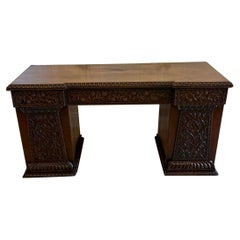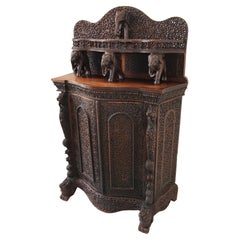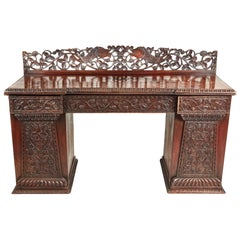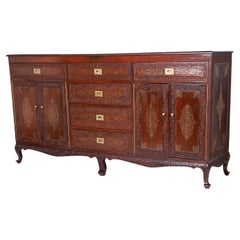Indian Antique Carved Sideboard
Antique 19th Century English Anglo-Indian Sideboards
Padouk
Antique Late 19th Century Indian Anglo-Indian Sideboards
Wood
Recent Sales
Antique Mid-19th Century Indian Anglo-Indian Sideboards
Padouk
20th Century Indian Anglo-Indian Dressers
Rosewood
Antique 19th Century Unknown Sideboards
Oak
Antique 19th Century Burmese Anglo-Indian Cabinets
Hardwood, Padouk
People Also Browsed
21st Century and Contemporary American Spanish Colonial Wall Lights and ...
Wrought Iron
Late 20th Century Italian Mid-Century Modern Chandeliers and Pendants
Art Glass
2010s Italian Mid-Century Modern Chandeliers and Pendants
Brass
Antique Early 1800s English Georgian Beds and Bed Frames
Upholstery, Mahogany
2010s Italian Fountains
Limestone
Antique Late 19th Century German Black Forest Clocks
Walnut
21st Century and Contemporary German Black Forest Crystal Serveware
Crystal
Antique 16th Century Belgian Renaissance Tapestries
Wool, Silk
Late 20th Century French Mid-Century Modern Sectional Sofas
Fabric, Foam
Early 20th Century American American Craftsman Chandeliers and Pendants
Antler
Antique 1810s English George III Center Tables
Mahogany, Oak
2010s Chinese Musical Instruments
Brass
Vintage 1950s Italian Rococo Revival Wall Lights and Sconces
Porcelain
Mid-20th Century American Mid-Century Modern Decorative Art
Wood
Antique Early 19th Century Scottish Rococo Fireplaces and Mantels
Statuary Marble
2010s German Black Forest Crystal Serveware
Crystal
Finding the Right Sideboards for You
An antique or vintage sideboard today is a sophisticated and stylish component in sumptuous dining rooms of every shape, size and decor scheme, as well as a statement of its own, showcased in art galleries and museums.
Once simply boards made of wood that were used to support ceremonial dining, sideboards have taken on much greater importance as case pieces since their modest first appearance. In Italy, the sideboard was basically a credenza, a solid furnishing with cabinet doors. It was initially intended as an integral piece of any dining room where the wealthy gathered for meals in the southern European country.
Later, in England and France, sideboards retained their utilitarian purpose — a place to keep hot water for rinsing silverware and from which to serve cold drinking water — but would evolve into double-bodied structures that allowed for the display of serveware and utensils on open shelves. We would likely call these buffets, as they’re taller than a sideboard. (Trust us — there is an order to all of this!)
The sideboard is often deemed a buffet in the United States, from the French buffet à deux corps, which referred to a storage and display case. However, a buffet technically possesses a tiered or shelved superstructure for displaying attractive kitchenware and certainly makes more sense in the context of buffet dining — abundant meals served for crowds of people.
Every imaginable iteration of the sideboard has taken shape over the years. Furniture maker and artist Paul Evans, whose work has been the subject of various celebrated museum exhibitions, created ornamented, welded and patinated sideboards for Directional Furniture, collections such as the Cityscape series that speak to his place in revolutionary brutalist furniture design as much as they echo the origins of these sturdy, functional structures centuries ago.
If mid-century modern sideboards or vintage Danish sideboards are more to your liking than an 18th-century mahogany sideboard with decorative inlays in the Hepplewhite style, the particularly elegant pieces crafted by designers Hans Wegner, Edward Wormley or Florence Knoll are often sought by today’s collectors.
Whether you have a specific era or style in mind or you’re open to browsing a vast collection to find the right fit, 1stDibs has a variety of antique and vintage sideboards to choose from.



